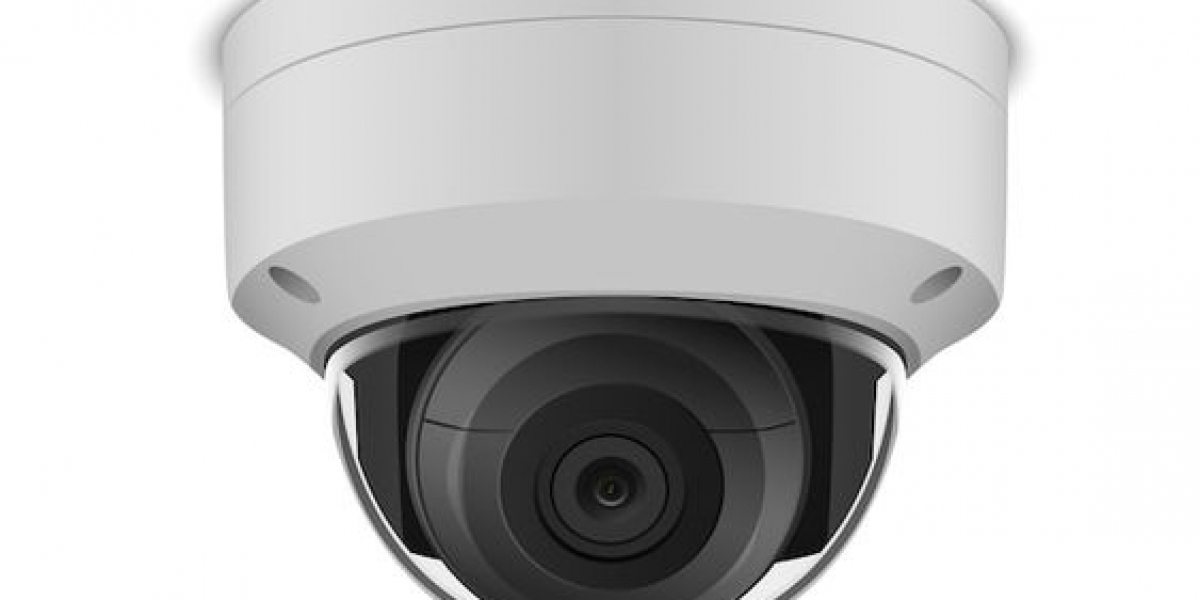Installing Surveillance Cameras: A Comprehensive Guide to Setup and Best Practices
Surveillance cameras have become an essential part of modern security systems, offering businesses, homeowners, and public institutions a reliable way to monitor and protect their properties. Proper installation is crucial to ensure the effectiveness of a surveillance system, as it determines the coverage area, image quality, and overall functionality of the cameras. Whether you're setting up a new system or upgrading an existing one, understanding the process of installing surveillance cameras is key to maximizing their benefits.
Importance of Surveillance Camera Installation
A well-installed surveillance camera system provides numerous advantages:
- Crime Prevention: Visible cameras act as a deterrent to potential criminals, reducing the likelihood of theft, vandalism, or other criminal activities.
- Evidence Collection: In the event of a crime or accident, surveillance footage can serve as valuable evidence, aiding law enforcement in investigations.
- Monitoring and Security: Cameras allow for real-time monitoring of a property, whether it’s a business, home, or public space, ensuring security personnel can respond promptly to incidents.
- Peace of Mind: For homeowners and business owners, surveillance cameras offer peace of mind by providing a continuous view of their surroundings.
Steps for Installing Surveillance Cameras
Proper installation of surveillance cameras requires careful planning, selecting the right equipment, and following industry best practices to ensure optimal performance. Below is a step-by-step guide to help you through the process.
1. Assess Your Security Needs
Before installing cameras, it’s essential to evaluate your security requirements:
- Determine Coverage Areas: Identify the key areas that need monitoring. Common locations include entrances, exits, parking lots, driveways, hallways, and blind spots.
- Indoor vs. Outdoor: Decide whether you need indoor, outdoor, or a combination of both types of cameras. Outdoor cameras should be weatherproof and resistant to harsh conditions.
- Fixed or PTZ Cameras: Determine whether you need fixed cameras, which offer a stationary view, or PTZ (pan-tilt-zoom) cameras that can move and zoom for greater coverage.
- Resolution and Image Quality: Depending on your security needs, choose cameras with appropriate resolution (e.g., 1080p, 4K) to capture clear footage.
2. Choose the Right Camera System
Surveillance cameras come in various types, each suited to different security needs:
- Wired vs. Wireless: Wired cameras provide a stable connection and are ideal for long-term installations, while wireless cameras offer flexibility and are easier to install but may be susceptible to interference.
- IP (Internet Protocol) Cameras: IP cameras transmit video data over a network and offer higher resolution, advanced features, and remote viewing capabilities via smartphones or computers.
- Analog Cameras: Traditional analog cameras transmit video through coaxial cables to a DVR (Digital Video Recorder). They are more affordable but generally have lower resolution than IP cameras.
Once you've chosen the type of cameras, ensure they are compatible with your recording system (DVR or NVR for IP cameras) and any additional features, such as motion detection or night vision.
3. Plan Camera Placement
Camera placement is critical to ensuring comprehensive coverage and avoiding blind spots. Consider the following guidelines:
- Mount Cameras at High Vantage Points: Position cameras high enough to cover large areas and minimize tampering risks. Outdoor cameras should be mounted at least 8 to 10 feet off the ground.
- Angle Cameras for Maximum Coverage: Ensure that cameras are angled to cover entry points, high-traffic areas, and vulnerable spots, such as windows or side doors. Avoid placing cameras directly into the sun or other bright light sources to prevent glare.
- Consider Field of View: Each camera has a different field of view (FOV), which determines how wide an area it can monitor. Cameras with a wide FOV can cover more ground but may lose detail in specific areas.
- Avoid Obstructions: Make sure that no trees, walls, or other objects block the camera’s view.
4. Run Cables and Connect Equipment
For wired systems, the next step is running cables from the cameras to the recording device. Follow these steps for a successful cable installation:
- Route Cables Securely: Plan a cable path that avoids high-traffic areas, and use wall conduits or protective covers to prevent damage.
- Connect Cameras to Power: Most cameras require a power source. Ensure each camera is connected to a reliable power outlet or consider using PoE (Power over Ethernet) if using IP cameras, which provides both power and data through a single Ethernet cable.
- Connect to the Recorder: For wired systems, connect the video cables to the DVR or NVR, ensuring they are properly labeled for easy identification during monitoring.
5. Configure the System
After the hardware is in place, it's time to configure the software settings and network connections for your surveillance system:
- Set Up the DVR/NVR: Install and configure the recording device, setting the system to record continuously, at scheduled times, or based on motion detection. Customize the recording settings to suit your needs, such as adjusting the resolution and frame rate.
- Remote Viewing Setup: For IP cameras, configure the system to allow remote viewing via a smartphone or computer. This typically involves setting up the system with an IP address or cloud service for remote access.
- Test Camera Feeds: Test each camera’s video feed to ensure it’s functioning correctly, providing clear images, and covering the intended areas.
6. Test and Adjust Cameras
After installation, it’s important to test the entire system:
- Check for Blind Spots: Review the video footage to ensure there are no blind spots or gaps in coverage.
- Verify Night Vision: If using cameras with night vision, test their performance in low-light conditions to ensure they capture clear images at night.
- Test Motion Detection: If your cameras are equipped with motion detection, verify that the sensors trigger correctly and that the notifications are set up properly.
7. Secure Your System
Protect your surveillance system from potential breaches by implementing security measures:
- Change Default Passwords: For IP cameras and NVRs, change default passwords and use strong, unique credentials to prevent unauthorized access.
- Enable Encryption: For wireless systems, use encryption protocols (WPA2 or WPA3) to secure your network connection and protect the data transmitted between cameras and the recorder.
- Regularly Update Firmware: Keep your cameras and recording devices up to date with the latest firmware to protect against vulnerabilities.
Best Practices for Surveillance Camera Installation
- Use Weatherproof Cameras Outdoors: Ensure that outdoor cameras are rated for all-weather use to avoid damage from rain, dust, or extreme temperatures.
- Ensure Sufficient Lighting: Good lighting is essential for clear footage, especially at night. Consider installing additional lighting in dark areas or choosing cameras with built-in infrared LEDs for night vision.
- Backup Footage: Regularly back up your video recordings to an external hard drive, cloud storage, or other secure locations to ensure you have access to important footage if needed.
Conclusion
Installing surveillance cameras is an effective way to improve security and monitor your property. By carefully planning the installation, choosing the right equipment, and following best practices, you can ensure that your surveillance system operates efficiently and provides the protection you need. Whether for residential or commercial purposes, proper installation is crucial to getting the most out of your surveillance system while ensuring peace of mind









